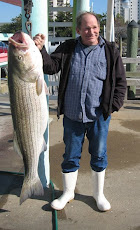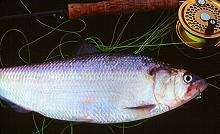 |
| The Chinese Mitten Crab |
Live Chinese Mitten Crabs (Eriocheir sinensis) have been caught in crab pots in Chesapeake Bay (2005-2007) and Delaware Bay (May 2007). These are the first confirmed reports for the eastern United States. To date, there have been seven crabs documented, and five have been in the past two weeks.
“We don’t yet know whether the crab has established reproductive populations in these estuaries or spread to other locations along the eastern U.S.,” said a marine official.
The Chinese Mitten Crab is native to East Asia, and is a potential invasive that could have negative ecological impacts. Mitten crabs are already established invaders in Europe and on the West Coast of the United States. The crab is listed as injurious wildlife under the Federal Lacey Act, which makes it illegal in the United States to import, export, or conduct interstate commerce of mitten crabs without a permit.
The Chinese Mitten Crab occurs in both freshwater and saltwater. It is catadromous, migrating from freshwater rivers and tributaries to reproduce in saltwater. Young crabs spend 2-5 years in freshwater tributaries and can extend miles upstream of bays and estuaries. Mature male and female crabs migrate downstream to mate and spawn in saltwater estuaries. Chinese mitten crabs burrow into banks and levees along estuaries and are able to leave the water to walk around obstacles while migrating.
To determine the status, abundance, and distribution of this species along the eastern U.S., a Mitten Crab Network has been established. The network began as a partnership among several state, federal, and research organizations, with an initial focus on Chesapeake and Delaware bays. The network is now being expanded to include resources managers, commercial fishermen, research organizations, and citizens along the eastern U.S.
Citizens are asked to help by reporting any mitten crabs to the Network or to a state resource manager.
The mitten crab has claws equal in size with white tips and hair; carapace up to 4 inches wide; light brown to olive green in color; no swimming legs; and has eight sharp-tipped walking legs.


















5 comments:
Good information. Thanks for making it available
Tom, miss you posting
Tom: When you coming back?
I'm beginning to hate that crab.
Sorry guys!
Been a busy summer.
Flattered by your comments.
Post a Comment